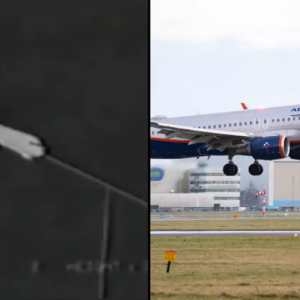What Happened To The Bodies From The Battle Of Stalingrad?
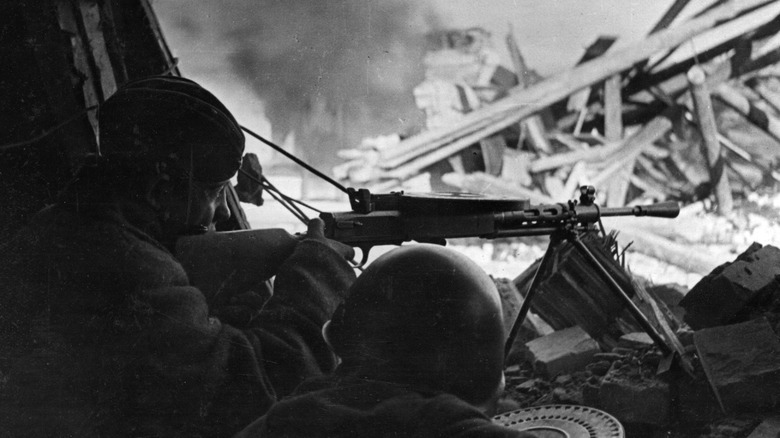
For more than five months between August 1942 and February 1943, the Battle of Stalingrad raged on as the German 6th Army and its allies fought for control of the city against its Russian defenders in the deadliest conflict of World War II — and the history of the world. In the end, the Red Army crushed the Nazis and saved Stalingrad, the city on the Volga River now called Volgograd. But both sides paid a terrible cost. There were more than 1.1 million Russian casualties, while an estimated 800,000 Axis troops perished, were wounded, went missing, or were captured. On top of this, around 40,000 civilians stuck in Stalingrad also died in this battle that helped turn the tide of the war.
Many of the corpses on both sides ended up in mass graves and identifying the bodies was — and remains — a huge problem. “Bombs would explode and there was no way of telling who the dead were,” Anatoly Kozlov, who had been a Russian tank commander, told CBC News in 2018 (he died in 2019, at 97). Even today, more than 80 years later, searchers continue to find bodies from the bloody fight.
Room to room
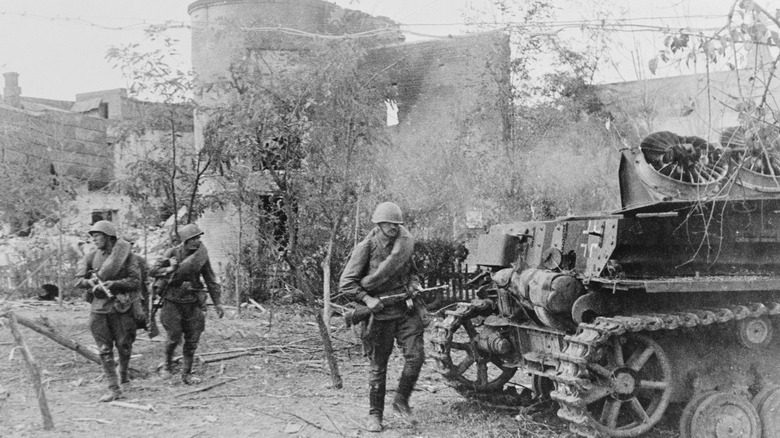
The Battle of Stalingrad saw some of the “most high-intensity urban combat in history” resulting in “truly unimaginable” death and destruction, according to the Modern War Institute. Journalist David M. Nichol, reporting for the Chicago Daily News in February 1943, said that for months the battle involved “interior fighting, much of it at night, room-to-room, hallway-to-hallway.” The battle left the city devastated and the dead piled up. The death toll was so high because both Adolf Hitler and Joseph Stalin — two of the most infamous dictators in history — gave orders not to retreat.
“Frost-blackened corpses, in the grotesque attitudes in which they fell or were pushed aside into some convenient trench, seem a perfect natural accompaniment for this mad scene,” Nichol wrote. Maria Rokhlina, who was a teenage Russian combat medic during the battle, recalled that the ground was too frozen to bury the dead that winter. “Corpses were piled up,” she recalled (via National Geographic). “There was no place to bury them.”
Corpses littered the streets
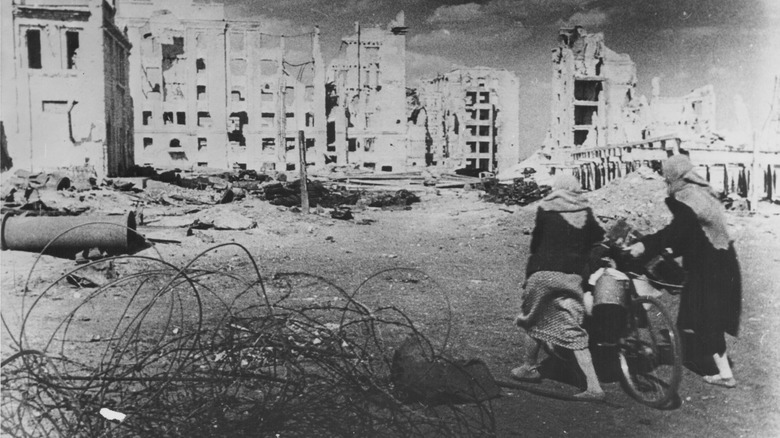
For the civilian population of Stalingrad, their daily lives during the months-long siege were horrific. Bodies littered the streets and clogged up the Volga River, the only source of drinking water. People would just push corpses aside, load up on water, and — if they were lucky — boil the water before drinking it. “The bank of the river was covered in dead fish mixed with human heads, arms, and legs, all lying on the beach,” Konstanin Duvanov, a Russian soldier, recalled (via BBC News). “They were the remains of people who were being evacuated across the Volga, when they were bombed.”
Some residents resorted to subsisting on clay, but even then they had to be careful. “My mother would throw away the bits of clay that were soaked in blood, and then take the rest and filter it through a piece of cloth,” Valentina Savelyeva, who was a child during the battle, remembered.
Mass graves
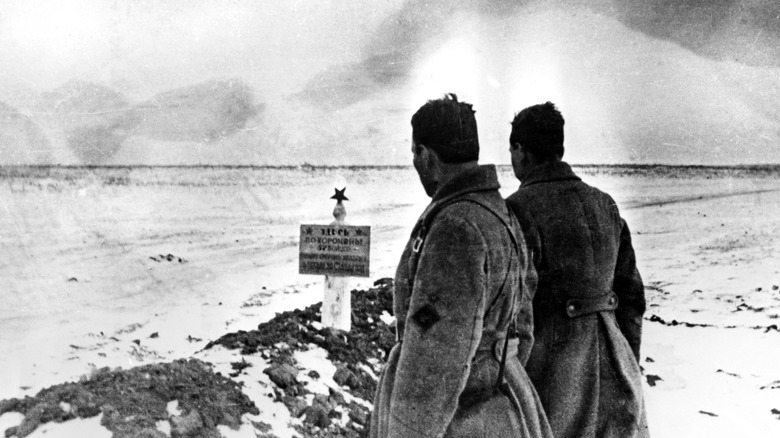
By December 1942, as the German Army faced not just the Red Army but hunger and the bitter Russian winter, they weren’t choosy about where they buried their fallen comrades. Henry Shapiro, a United Press reporter, noticed that “sometimes they haven’t time to dig individual graves. I saw mass graves sometimes” due to the huge amount of casualties.
At the beginning of February 1943, following a counteroffensive by the Red Army that had encircled the German troops and their allies, they surrendered to the Russians. In the aftermath of the battle, the Russians threw the German dead — who hadn’t been buried by their own side — into hastily constructed mass graves. “Due to the threat of epidemic at that time there was a rush to remove the countless corpses of men and animals as soon as possible,” a spokesperson for the German War Graves Commission told the Daily Mail in 2018. “Earth holes, gorges and streams became mass graves.”
The Motherland Calls
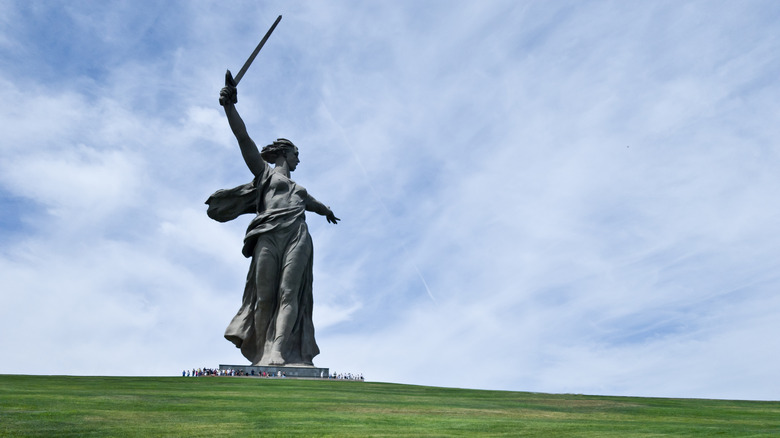
Many of the Red Army dead also ended up in mass graves. On the highest spot of the city, overlooking the Volga River, stands a giant statue of a woman with a sword in one hand, her other arm outstretched. Underneath this 20-story tall monument, called the Motherland Calls, lies the remains of 35,000 soldiers. Nearby, the Hall of Heroes commemorates the Russian casualties with an eternal flame and the names of more than 7,000 dead inscribed in stone and watched over by four Russian soldiers.
There is also a memorial dedicated to the Unknown soldier, representing all those who died without being identified. “Your name is unknown,” reads the plaque (via UNESCO). “Your deed is immortal. Eternal glory.” But even today, the remains of soldiers from both the German and Russian armies continue to turn up. “Every year in the former Stalingrad on average three to four mass graves are found,” the representative of the German War Graves Commission said.
Bodies are still being found
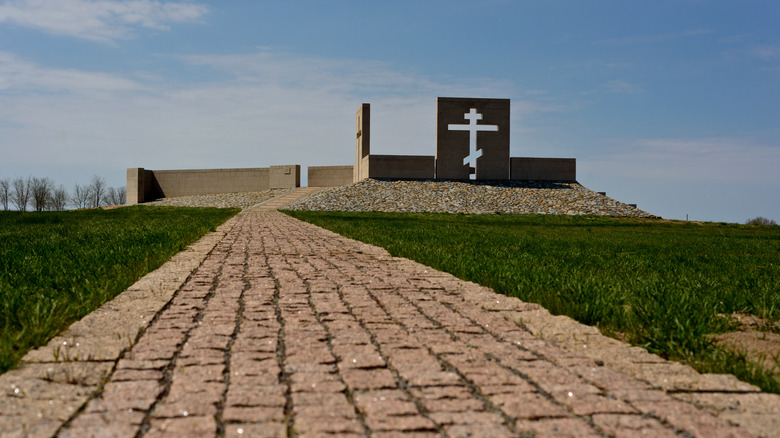
In 2018, Russian workers laying pipe in Volgograd discovered a grave containing more than 1,800 German soldiers and their horses who died during the battle. This was far from the first such find. Searchers continue to locate several hundred bodies at the massive battle site each summer. They sometimes use metal detectors to try to find items like cutlery that might have the soldiers’ names scratched on them. The hope is that this could aid in identifying the dead.
“There are still a lot of relatives who have hope to find their relative, to know anything [about] where they died or how they died,” Mikhail Shuvarikov, a volunteer searcher, said in 2018. Following excavations and possible identification, many of the remains end up at the nearby Rossoshka Military Cemetery. There, both German and Russian war dead lay on the same hallowed ground where they once fought each other more than 80 years ago.
News
The “Red Zone” – Land Still Abandoned Due to the Dangers Left by the First World War
The “Red Zone” – Land Still Abandoned Due to the Dangers Left by the First World War In the aftermath of the First World War, large areas of northeast France were left in ruin. Years of constant siege warfare along…
Before Becoming a Big-Name Actor, Richard Todd was a Paratrooper Who Fought at Pegasus Bridge
Before Becoming a Big-Name Actor, Richard Todd was a Paratrooper Who Fought at Pegasus Bridge Photo Credit: 1. Sgt. Christie, No. 5 Army Film & Photographic Unit / Imperial War Museums / Wikimedia Commons / Public Domain 2. Silver Screen…
The Potsdam Giants: A Prussian Infantry Regiment Of Nothing But Very Tall Soldiers
The Potsdam Giants: A Prussian Infantry Regiment Of Nothing But Very Tall Soldiers Frederick William I inspecting his giant guards known as The Potsdam Giants, a Prussian infantry regiment No 6, composed of taller-than-average soldiers. Frederick William I of Prussia,…
Ellen DeGeneres cuts a very casual figure as she drives around in her Ferrari
Ellen DeGeneres cuts a very casual figure as she drives around Montecito in her Ferrari… while preparing to embark on her stand-up tour Ellen DeGeneres cut a very casual figure as she made her way around Montecito on Tuesday morning. The…
“I’m heavily tattooed and keep getting rejected for jobs – it’s not fair”
Heavily tattooed OnlyFans star, 23, with multiple piercings on her FACE slams TJ Maxx for rejecting her for a job – accusing retailer of unfairly judging her dramatic look A woman has accused TJ Maxx of rejecting her for a…
All 75 passengers killed in plane crash after pilot let his chirldren control the plane
Praying, turning the engine off by accident and letting KIDS play with the controls: The worst blunders made by pilots before a crash revealed Every time we board a plane, we put our lives in the hands of the pilot….
End of content
No more pages to load





